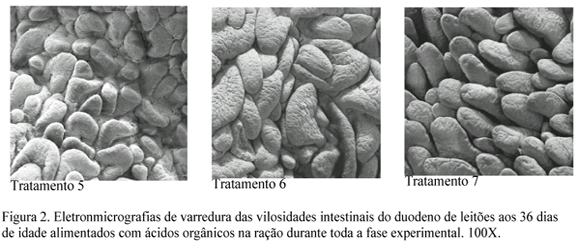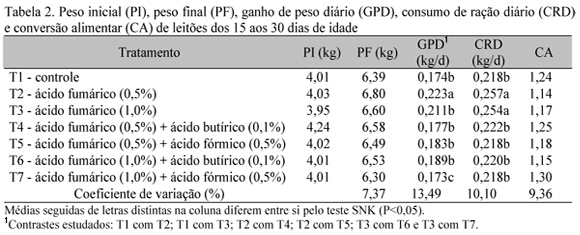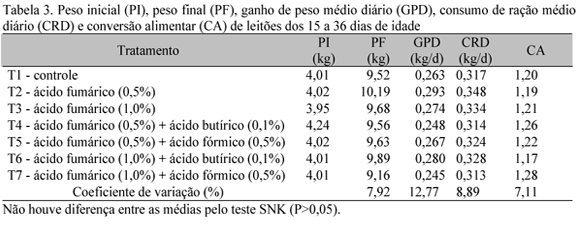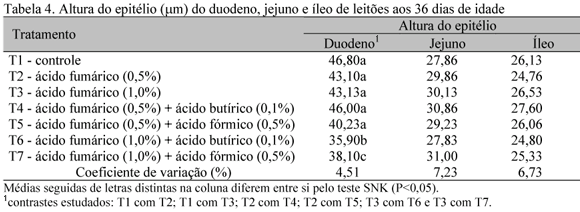Performance, morphological and morphometric characteristics of the small intestine of 210 recently weaned piglets, averaging 4.04 ± 0.66 kg, during two periods ( from 15 to 30 days of age and from 15 to 36 days of age) were evaluated in a randomized block experimental design with seven treatments, T1: control diet (CD); T2: CD + 0.5% fumaric acid; T3: CD + 1.0% fumaric acid; T4: CD + 0.5% fumaric acid + 0.1% butyric acid; T5: CD + 0.5% fumaric acid + 0.5% formic acid; T6: CD + 1,0% fumaric acid + 0.1% butyric acid and T7: CD + 1.0% fumaric acid + 0.5% formic acid, five replicates and six piglets per experimental unit. No effects of treatment (P<0.05) on body weight at 30 days of age was observed but significant differences between treatments were observed for daily weight gain and feed consumption from 15 to 30 days of age. Piglets fed supplemented acid fumaric diets had higher performance during this period. No significant effects of treatments on body weight at 36 days of age, daily weight gain, daily feed intake and feed conversion were observed (P>0.05) from 16 to 36 days of age. Significant differences (P<0.05) between treatments for duodenal epithelium height were observed, but not for jejunum and ileum epithelium heights. Normal villus patterns were observed in the electromicrographs of duodenum from piglets fed all different diets.
piglet; organic acid; performance; small intestine; morphology






